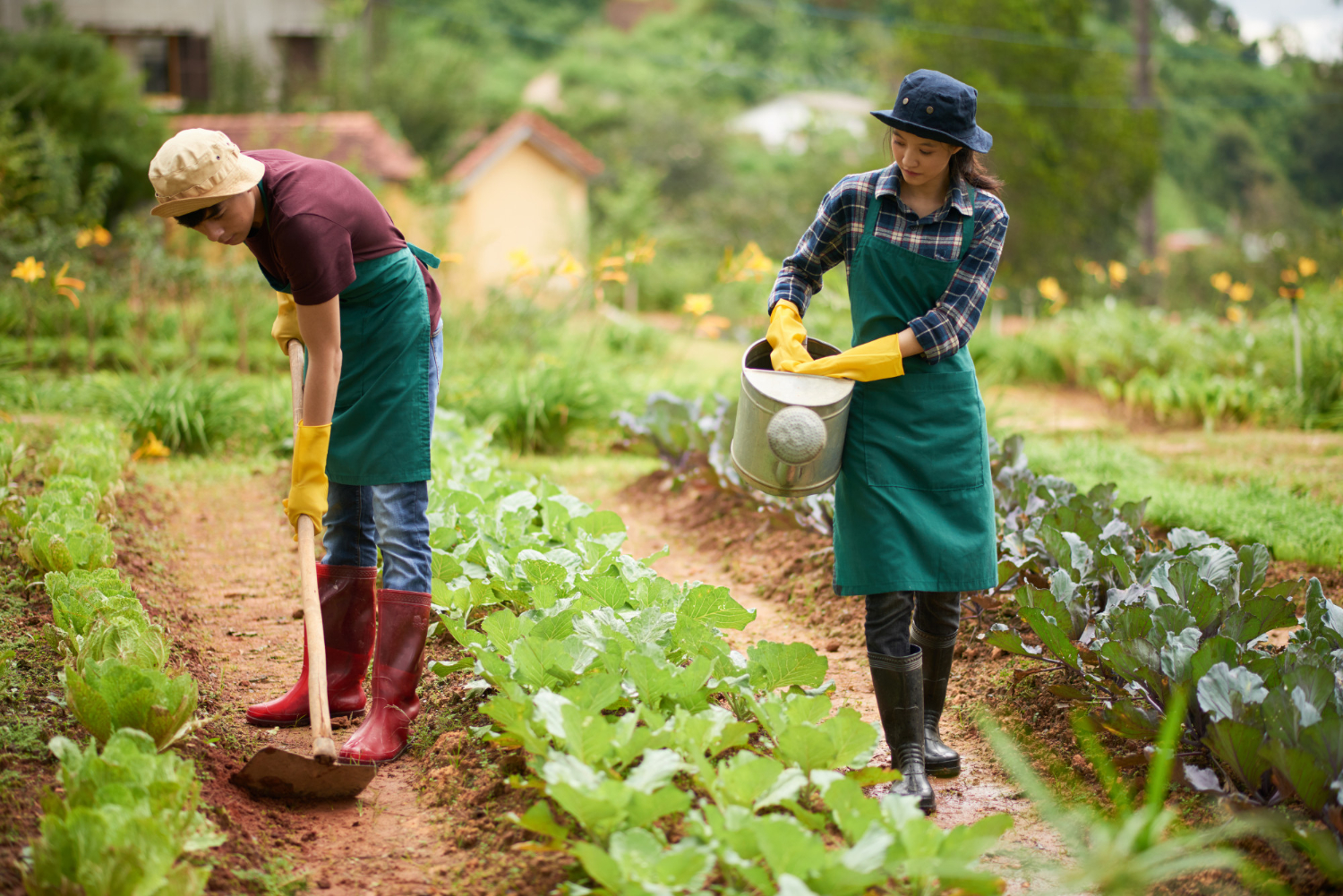Many people dream of self-sufficient farming but feel held back by limited land. Some may have only 1 to 3 rai and wonder if it’s enough to support a family.
This article is based on a real-life experience of utilizing just 2.5 rai to achieve integrated farming — sufficient for both household consumption and generating extra income. With clear planning and efficient resource use, this model is ideal for beginners and anyone interested in planning their own agricultural space.
Concept and Land Allocation
Land planning is the heart of self-sufficient agriculture. In this model, the 2.5 rai is divided into key sections as follows:
| Section | Size | Purpose |
|---|---|---|
| Living Area | 0.25 rai | Daily residential use |
| Food Garden | 1 rai | Grow vegetables for self-consumption and reduce expenses |
| Income Zone | 1 rai | Grow cash crops such as bananas, ginger, and lime |
| Water Source | 50 sq.wah | Rainwater pond for irrigation |
| Perimeter Trees | Remaining space | Plant useful trees such as bananas, coconuts, guavas |
The core idea Emphasize diversity in crops, choosing those that are “edible, marketable, and low maintenance.”
Crops Grown in Each Zone
- Edible vegetables chili, eggplant, green onions, coriander, pumpkin, cucumber, yard-long beans
- Cash crops: bananas (planted along fences for shade and mulch), ginger (grows well in partial shade), lime (can be grown in pots and yields good income)
Low-Cost Irrigation System
A small pond (50 sq.wah) is dug to collect rainwater for irrigation. Combined with a simple gravity-fed drip system, it requires no electricity and is cost-efficient.
Related articles
Challenges and Lessons Learned
Some crops failed due to planting in the wrong season. Daily monitoring is essential to manage pests. Balancing time between farming and daily life is a skill that needs practice. Ultimately, hands-on experience, learning from mistakes, and “adapting to nature” are the keys to long-term success.
Who Is This Article For?
This guide is perfect for:
- People with limited land who want to grow their own food
- Anyone looking to reduce living expenses by producing food organically
- Retirees or career changers interested in self-sufficient, small-scale farming
Even if you only have a small plot at home, this plan can inspire you to get started — showing that just “2.5 rai” can be enough for a secure and sustainable lifestyle.
สถิติการรีวิวล่าสุด
คุณก็รีวิวบทความเราได้ แค่แชร์ แนะนำ หรือบอกต่อให้กับเพื่อนคุณ 💚


Herbs information
แก่นตะวัน สุดยอดว่านสมุนไพร
แก่นตะวัน หรือ Jerusalem Artichoke (Helianthus tuberosus) เป็นว่าน หรือพืชดอกในตระกูลทานตะวัน
อ่านบทความนี้ต่อBest Infomal
มะนาว และผลไม้รสเปรี้ยวอื่น ที่แทนกันได้
มะนาวแพง ทุกปี เหตุใดถึงเป็นเช่นนั้น แม้ว่าในทุกปี พืชผักผลไม้ ผลิตผลทางการเกษตรหลากหลายชนิด ในช่วงเวลาหนึ่ง จะมีการขยับขึ้น
อ่านบทความนี้ต่อBest Infomal
หญ้าสุวรรณภูมิ พืชพลังงาน ใช้เป็นอาหารสัตว์ก็ได้
หญ้าสุวรรณภูมิ เป็นพืชในกลุ่มหญ้าเนเปียร์ พืชชนิดนี้ถูกจัดอยู่ในกลุ่มพืชให้พลังงาน รวมทั้งพืชใช้สำหรับเลี้ยงสัตว์ มีการเพราะปลูกกันมากในหลายพื้นที่
อ่านบทความนี้ต่อAgricultural articles
organic baby food products
The organic baby food is that which is processed without the use of artificial pesticides
อ่านบทความนี้ต่อHow to
เพาะเห็ดลมอย่างไรให้ได้ผล
วันนี้ตรุษจีน แต่ว่ากันด้วยเรื่องเห็ดๆ และวันนี้ลูกทีม เกษตรปลอดสารพิษ จะมาว่ากันด้วยเรื่องการเพาะเห็ดลม
อ่านบทความนี้ต่อOrganic Vegie
ซื้อพริกในตลาด ระวังสารพิษจากเชื้อรา
สารพิษอฟลาทอกซินที่ปนเปื้อนในเครื่องเทศ โดยสารพิษจากเชื้อรา (mycotoxin) คือสารพิษธรรมชาติที่สร้างจากเชื้อรา
อ่านบทความนี้ต่อ